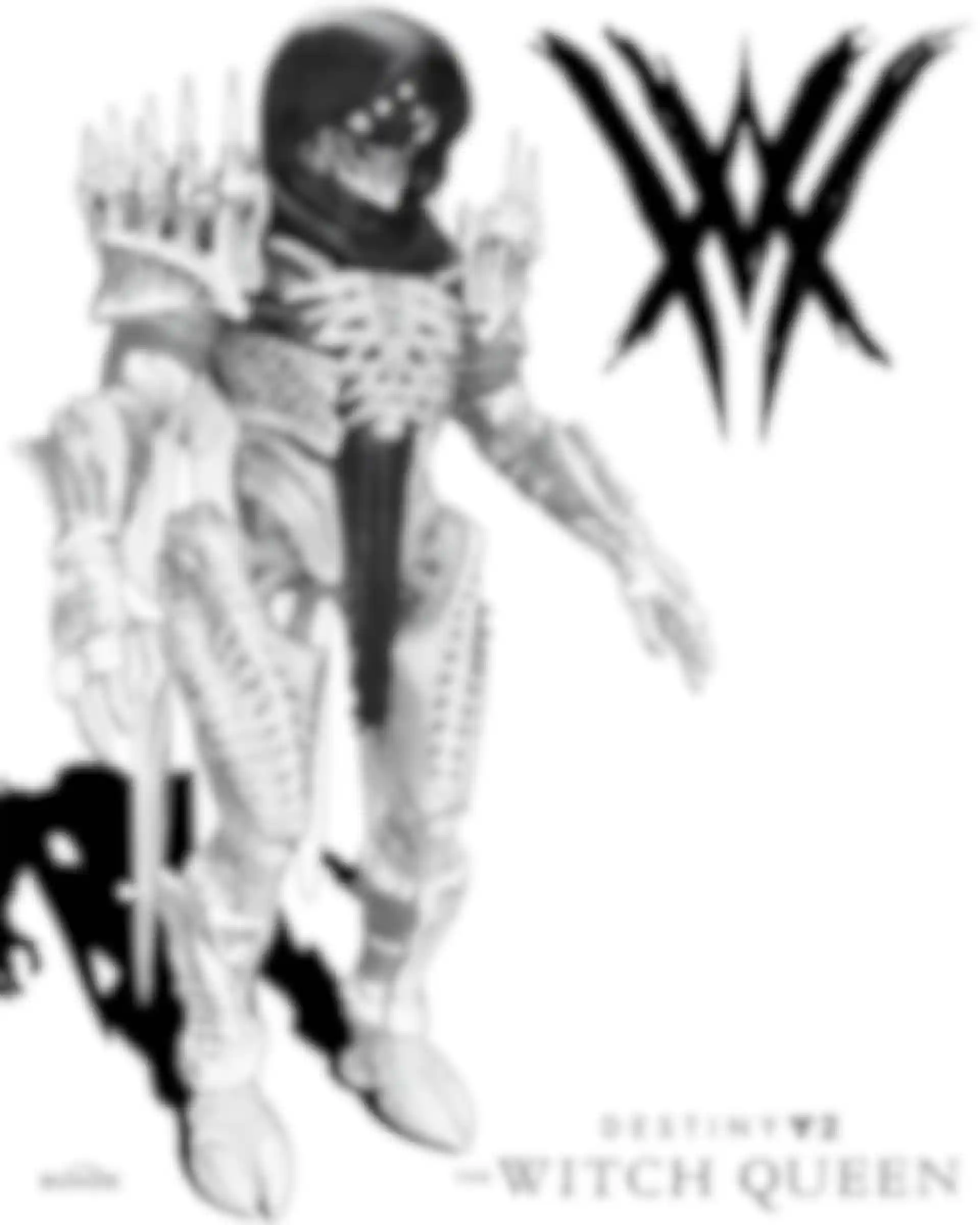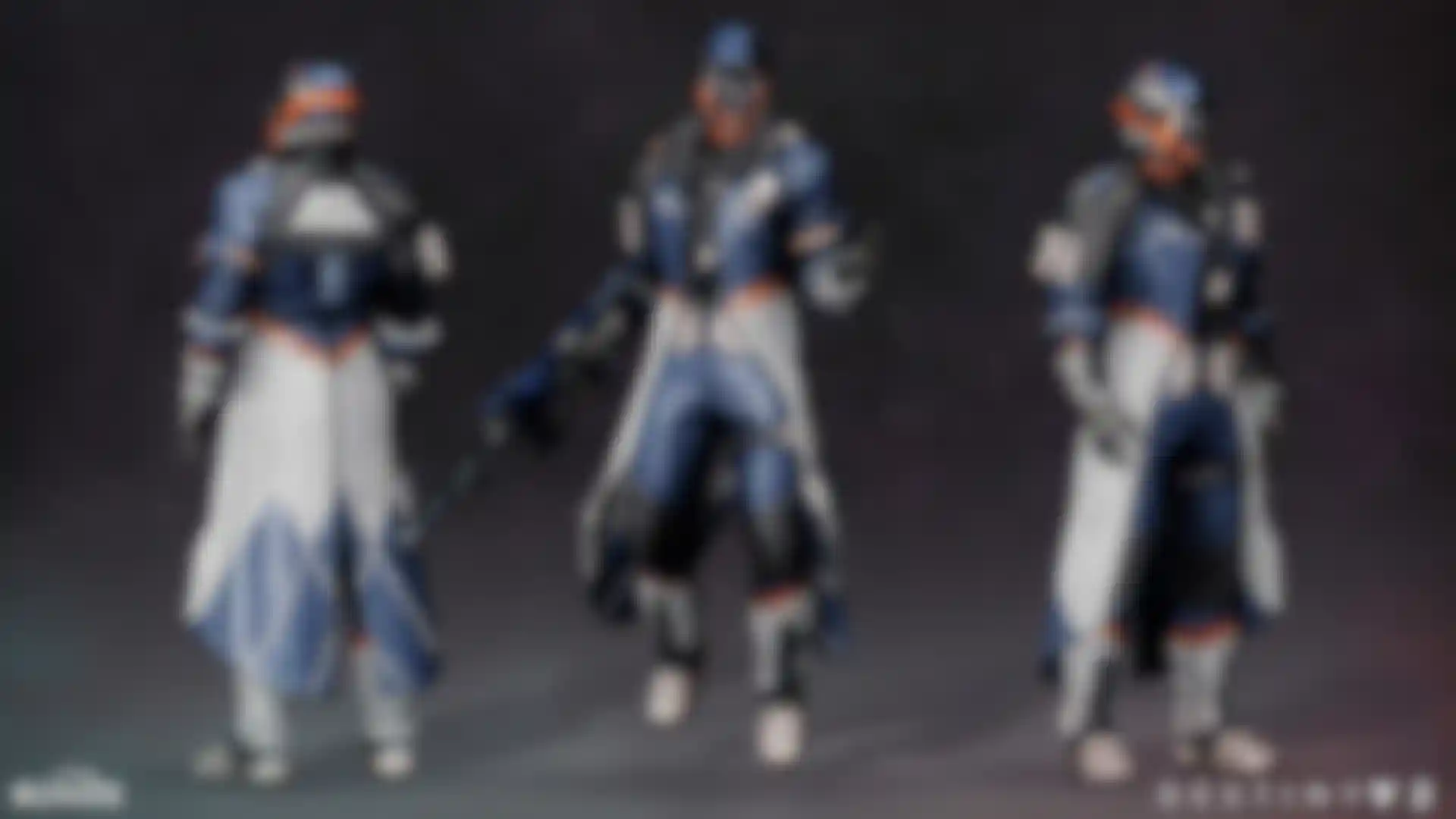
“Destiny 2: The Witch Queen” The Bungie team on using ZBrush to create characters and weapons for the most recent ‘Destiny’ expansion.
Founded in 1991, Bungie is the game studio behind legendary titles “Destiny,” “Halo,” “Myth,” “Marathon” and more. With global headquarters in Bellevue, Washington, the company has come a long way from its beginnings in a one-bedroom apartment in Chicago.
We talked with several artists on the Bungie team—Creature Designer and Senior Character Artist Alex Velazquez, Character Artist Cherylynn Lima and Senior 3D Hard Surface Artist Dylan Mellot about “Destiny 2: The Witch Queen,” the 2022 expansion to the popular action MMO (massively multiplayer online) game.
Here's what they had to say about using ZBrush to create characters and weapons for a storyline that brings the Guardian protagonists face-to-face with the devious Savathûn and her Lucent Brood.
Please tell us a bit about yourself, the game, and your role as a character artist.

Velazquez: I’ve been at Bungie since 2015 and I’m a senior character artist on the Combatants team, meaning that I’m as much a curator as an artist. We manage and build the content library for the six combatant factions in “Destiny.”
With content spanning over 10 years, there are many systems and layers of detail that add up to making the enemy experiences so unique and enjoyable to play. “The Witch Queen” features a definitive new campaign and is a major beat in the story we have been weaving for the last eight years. It has brought players a new destination, Weapon Crafting, a new weapon archetype with Glaives and more.
For character artists, a season could require anything from kitbashing a new Cabal mini boss to re-sculpting a whole faction, as we did for the Lucent Hive [aka Brood] in “The Witch Queen.” And our work doesn’t just start and end with the art. Collaboration is crucial, so we are embedded with FX, animation and design teams, all working together to ensure Destiny’s combatants look good and convey necessary information and enhance the gameplay.
What’s it like to work at Bungie as part of the armor team?
Lima: I’ve been with Bungie for three years and can say wholeheartedly that this has been my favorite game dev role because they do a fantastic job creating a fun, supportive, and inclusive environment.
The armor team is constantly thinking about what a player might like to see from the next armor sets. We keep an eye on current and future fashion trends, notice what’s popular with the community and consult amongst ourselves about what we think players might like.

Reactions to recent work have been positive, and we love seeing how players interact with different ways of changing armor they already know. Our current focus is on shaders that let players customize armor. I’m often handed an armor concept and I build up the high and low polys before moving on to texturing and handling some of the more technical elements. The work is challenging at times but always rewarding and skill building.
Tell us about your role as 3D hard surface artist on the weapons team?
Mellot: As a fan and artist on the franchise, the thing that really stands out is just the sheer range of weapons in a world as diverse and multifaceted as “Destiny.” From alien designs and surprisingly organic weapons to straightforward firearms that might exist in real life one day, having a highly adaptable skill set that supports work across many kinds of shape languages and forms is essential and something I enjoy.
We are always looking for ways to make weapons more exciting and interesting for players. And, as we’re building what will be the final asset, we look for scenarios where we can add cool vertex animations, moving textures, complex materials, visually interesting shader effects and so on. Personally, I’m a sucker for weapons with glowing elements or moving panels that expose hidden parts underneath.
Describe how you used ZBrush and other tools for the Hive Combatants?
Velazquez: For “The Witch Queen,” we introduced three Hive Lightbearers, enemy analogs to the player classes. We updated the five Hive base units and created the Hive Ghost, which our consumer products team used to develop the Collector’s Edition.

I use ZBrush heavily in the front end of the creation process, utilizing a wide variety of workflows. For instance, we could start with ZSpheres, a DynaMesh cube or a mesh we GoZ in from another app.

Whether we aim to build hard surfaces or organics, there is a workflow in ZBrush that is ideally suited to the task. That said, I also allow myself to experiment and play with all the different tools in the box, even if there is a straightforward way of doing something. For me, ZBrush is a journey.
To build the Lucent Hive look, I created an IMM curve brush with a size modifier and used it to generate additive and subtractive meshes. Next, I leaned heavily on ZBrush's powerful boolean tools and combined Polygroups and ZRemesher to produce clean, usable topology and UV Master for a one -lick unwrap. Finally, I used some displacement maps and Surface Noise with Morph/Masking to detail many different pieces of armor quickly and consistently.
The image on the right shows a Lucent Hive Acolyte from “The Witch Queen” expansion.
Talk about the Inspector Warlock’s Armor.
Lima: During the development of “The Witch Queen,” I was privileged to work on the Inspector Warlock and its subsequent Gambit, Crucible and Vanguard armor variants. The inspiration for this set was noir/detective, so a trench-coat vibe was a must, and I did a lot of clothing research.


Initially, I created the robes in Marvelous Designer, but I now use ZBrush’s cloth dynamics as often as I can, as it does an excellent job with drapery and fabric crafting. I also used ZBrush’s library of brushes to create my own alphas and seams to enhance the construction of the garments. ZBrush’s layers tab gave me the flexibility to adjust the intensity of the details as I saw fit.
Dylan, describe your work on some of the weapons.
Mellot: Some of the first things I got to work on with the team were a reprisal of the whole set of sniper and scout rifles from The King’s Fall Raid. For the scout rifles, the major elements are bone and a soft, fleshy material. I leveraged ZBrush quite a bit, creating a custom material to get the detail right.
For the overhaul, I used a lot of the basic hard surface brushes, like Trim Dynamic and HPolish, to retain some of the sharpness and rigidity of bone while using some of the shape-building brushes—Clay Buildup and Dam Standard—alongside the Smooth Brush to add depth and height to the flesh to keep it looking soft and almost squishy.


I also used DynaMesh for “Destiny 2: The Witch Queen,” leaning on it to get workable topology when a weapon requires a fair bit of boolean work or sculpting.
Do you have any tips for artists pursuing a “dream job” in game creation?
Lima: My number one tip would be to find what you love, something that gives you purpose and brings you joy. When you find the aspect of game creation that really excites you, you will be compelled to learn more about it. The hardest part about this industry isn’t the competition, it’s the tedium of learning and the level of commitment required to finish projects.
I love characters, life drawing and storytelling, and I’m interested in fashion and sewing. These are all in the background when I’m practicing or creating professionally. Having a real passion for what you’re creating helps you keep your cool when the going gets tough—and it will.
Mellot: Working in video games can be exciting, engaging and energizing. You get to add something to this organic, evolving, complex thing and put it out there for the world to see and enjoy. But making 3D art that is visually superb and awesome to look at is just one aspect of the show. It’s still a job, and sometimes it’s difficult, frustrating and exhausting.

It’s never about the artist but about collaborating with many other departments to make each weapon set or Exotic feel really special. It’s important not to let go of what brought you here in the first place. Mark milestones for yourself after significant accomplishments, remember where you drew your love from and find moments to reengage with that.
What’s the best part of working with such an epic game?
Velazquez: Launch days are the best. There is a feeling you get when you’ve worked hard to create something new with a team of people you respect and you have tens of thousands of people waiting to see your work. It is a mix of adrenaline, excitement, trepidation and camaraderie. I see it on the faces of NASA engineers when they send up a shuttle, and I get it at Bungie on a seasonal cadence.
Can you hint at what’s next for your team and Bungie?
Velazquez: The penultimate chapter to the Light and Darkness saga is coming with “Lightfall,” our next major expansion, which will be followed by “The Final Shape” expansion. The future beyond that is a new frontier that we will need help building. So now is an exciting time to get on board and help build Destiny.